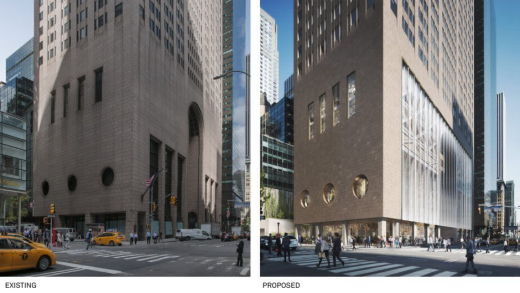A plan by the design firm Snøhetta to remake Philip Johnson’s AT&T Building has sparked anger in the architecture world.
In January 1979, the architect Philip Johnson appeared on the cover of Time magazine, gazing at the camera over the cover line “U.S. Architects: Doing Their Own Thing,” and hoisting an architectural model like a trophy. The model was of a building that wouldn’t open for another five years. But when its design had been unveiled the year before, it had made the front page of The New York Times and led one critic, Paul Goldberger, to call it “the most radical skyscraper design of the 1970’s.”
This skyscraper, 37 stories high and clad in pink granite, would be entered on Madison Avenue through a 116-foot-high neoclassical arch. It would be topped with a massive broken pediment—a scaled-up version of an ornament familiar from Chippendale furniture of the 18th century. Clearly, this was not another Lever House or Seagram Building, those cool pillars of glass and steel in the style preferred by mid-20th-century executives (named “the International Style” by Johnson himself, in fact, when he was a curator at the Museum of Modern Art in the 1930s). It was something new, and very different.
The AT&T Building would come to be seen as one of the defining works of Postmodernism, a style that reveled in ornament, historic allusion, and playfulness, all of which Modernism shunned.
Read More
citylab.com | November 1, 2017



